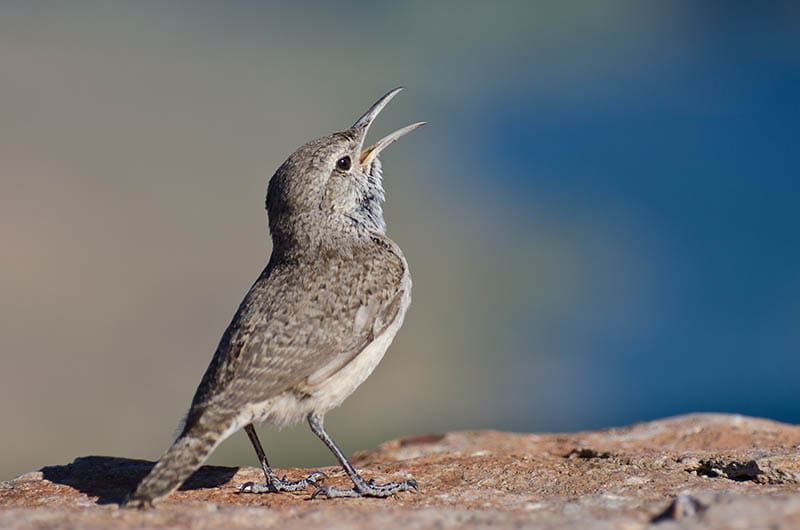9 Types of Wrens in California (With Pictures)
Last Updated on

Wrens are tiny, elusive little birds that can sometimes be hard to spot. But if you’ve been lucky enough to see one in California, you may be wondering what type of wren it was. There are eight regularly occurring types of wren in California, though a ninth—a visitor wren—does occasionally make an appearance too.
In this article, we’ll tell you all about the nine types of wren you can spot in California, what they look like, and the best time to see them. We’ve broken our list into groups of both migratory and resident birds. Some of the resident wrens in our list may migrate to California from colder places, but since the ones already on the west coast wouldn’t migrate away, we’ve categorized them as resident wrens.

Top 3 Migratory Wrens in California:
Although a few of these wrens do stay in California throughout the year, usually they migrate away during the summer, or the winter, depending on each type.
1. House Wren

| Scientific Name: | Troglodytes aedon |
| Length: | 4.3–5.1 inches |
| Weight: | 0.35–0.45 ounces |
| Wingspan: | 5.9 inches |
House wrens spend their summers in the United States and southern Canada, before migrating further south for the winter. These little birds are small, round, and brown. They have a lighter-colored throat and breast, and their tails and wings are often barred with darker brown or black.
House wrens love to forage in backyards and parks, and they like to hide in brambles and bushes. Watch out for them hopping onto low branches and examining old logs for insects.
2. Marsh Wren

| Scientific Name: | Cistothorus Palustris |
| Length: | 3.9–5.5 inches |
| Weight: | 0.3–0.5 ounces |
| Wingspan: | 5.9 inches |
Although some marsh wrens do reside permanently on the west coast of the United States, especially in the north, the best time to spot a marsh wren in California is during the winter. This type of wren breeds in the north of the United States, and in Canada, before migrating south for the winter.
Marsh wrens have a dark crown and distinctive black and white markings on their backs. Their throat and breast are pale gray, and their shoulders are buff in color, with no markings.
True to their name, marsh wrens inhabit freshwater marshes and wetlands. Look for them amongst tall stalks and cattails, flitting through the air to catch insects midflight.
3. Sedge Wren

| Scientific Name: | Cistothorus stellaris |
| Length: | 3.9–4.7 inches |
| Weight: | 0.25–0.35 ounces |
| Wingspan: | 4.7–5.5 inches |
Sedge wrens are both tiny and elusive. Although they aren’t easy to spot in California, the best time to look for them is from September onwards, when they migrate south for the winter.
Sedge wrens look similar to marsh wrens, but their bills are slightly shorter. Additionally, their undersides are a light brown, and their tails and wings are barred black. Although sedge wrens can also be found in wetlands and marshes, they also like wet grasslands, prairies, and meadows.
Top 6 Resident Wrens in California:
For most of the following birds, if they were already in California, they probably won’t migrate away. But additional wrens may migrate to California during warmer, or cooler months, depending on the type.
4. Rock Wren

| Scientific Name: | Salpinctes obsoletus |
| Length: | 4.9–5.9 inches |
| Weight: | 0.5–0.6 ounces |
| Wingspan: | 8.7–9.4 inches |
Rock wrens inhabit dry and rocky places and canyons. They build small cup-shaped nests that they nestle into gaps and crevices in rocks. These birds can be found in California all year round.
Rock wrens are brown on top, with a grey-brown belly that’s sometimes marked with small black spots. They have light gray eyebrow markings and dark legs. They’re often found foraging for food on the ground, probing crevices and cracks in the rock with their long, slightly curved bill.
5. Bewick’s Wren
| Scientific Name: | Thryomanes bewickii |
| Length: | 5.1 inches |
| Weight: | 0.3–0.4 ounces |
| Wingspan: | 7 inches |
Bewick’s wrens are resident birds that can be found in California throughout the year. Their distinct features make them easy to spot, as does their preference for inhabiting urban and suburban backyards, nest boxes, parks, and shrubs, and foraging for insects on tree trunks.
Look out for a relatively long tail with black bars and white corners. These birds have distinct pale eyebrow markings that run over each eye. They’re brown on top, and their underside is a lighter grey.
6. Cactus Wren

| Scientific Name: | Campylorhynchus brunneicapillus |
| Length: | 7.1–7.5 inches |
| Weight: | 1.18–1.65 ounces |
| Wingspan: | 11 inches |
Cactus wrens are not migratory birds. They inhabit hot and dry areas, and they can be found in California all year round. True to their name, cactus wrens often perch on the tops of cactus plants, where they sing out into the air. Cactus plants offer these wrens refuge from potential predators.
These wrens are relatively large, compared to other types of wrens. Their markings are very distinct, unlike those of the little brown birds that sometimes visit our backyards. A cactus wren’s crown is a dark reddish brown, which contrasts with its bold, pale eyebrow markings. Its belly is pale and speckled with dark spots, and its wings and tail are streaked with black and white markings.
7. Canyon Wren

| Scientific Name: | Catherpes mexicanus |
| Length: | 4.5–6.1 inches |
| Weight: | 0.3–0.7 ounces |
| Wingspan: | 7.1–7.9 inches |
Canyon wrens are resident birds, as they can be found in California throughout the year. They inhabit dry and rocky cliffs, canyons, and outcrops. Their size and coloring can make them difficult to spot, but when you do, their distinct colors should give them away.
These little wrens are a rusty brown on their undersides, with a dark orange tail that’s barred with black lines. Their wings and back are a dark grey-brown, but their chins and throat are white and clear from any markings.
8. Pacific Wren

| Scientific Name: | Troglodytes pacificus |
| Length: | 3.1–4.7 inches |
| Weight: | 0.3–0.4 ounces |
| Wingspan: | 4.7–6.3 inches |
Pacific wrens are the tiniest wrens found in the United States. In California, these wrens do not migrate, but those that inhabit cooler areas may migrate south for the winter.
These little birds are brown all over. They have small, round wings, and a short stubby tail, all of which are barred with dark brown. Their bodies are plump and round, and they hold their tail pointing up.
In California, you can find pacific wrens in woodlands and forests, where the male wren builds nests in holes in tree trunks using moss, lichen, and grass.
9. Winter Wren

| Scientific Name: | Troglodytes hiemalis |
| Length: | 3.1–4.7 inches |
| Weight: | 0.3–0.4 ounces |
| Wingspan: | 4.7–6.3 inches |
Winter wrens usually stick to the northeastern coast of the United States, and the east coast of Canada where they breed. However, a small amount of these wrens are sometimes found in the west, including California. The best time to look out for these birds in California is in the winter.
These little wrens prefer to inhabit the understory of forests, parks, and backyards, where they forage for insects, aphids, and larvae.
They’re a warm brown color all over, and they have pale eyebrow markings. Their short tail, which they hold erect, usually has black or dark brown barring.

Final Thoughts
That concludes our list of every wren you could possibly spot in California. Although these nine types of wren all have something or another in common, they’re easy to tell apart once you know what they look like, as well as their preferred habitat.
Wrens can be difficult to spot because of their shy nature, but if you look out for them at the right times, and in the right places, you’ll be sure to find them in no time!
Featured Image Credit: rck_953, Shutterstock
About the Author Cheryl Regan
Cheryl is a freelance content and copywriter from the United Kingdom. Her interests include hiking and amateur astronomy but focuses her writing on gardening and photography. If she isn't writing she can be found curled up with a coffee and her pet cat.
Related Articles:
Monocular vs Telescope: Differences Explained (With Pictures)
10 Types of Hummingbirds in Arkansas (With Pictures)
8 Types of Hummingbirds in Nebraska (With Pictures)
5 Types of Hummingbirds in Idaho (With Pictures)
3 Types of Hummingbirds in Mississippi (With Pictures)
8 Types of Hummingbirds in Kansas (With Pictures)
5 Types of Hummingbirds in West Virginia (With Pictures)
5 Types of Hummingbirds in Ohio (With Pictures)
